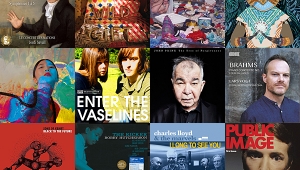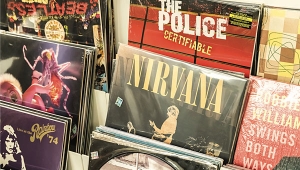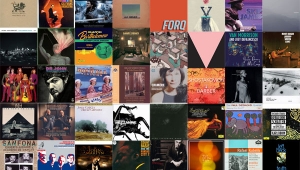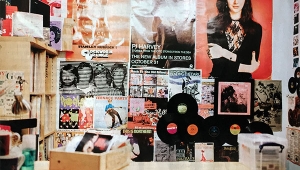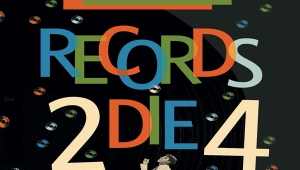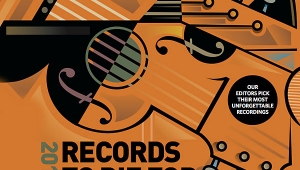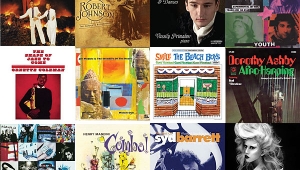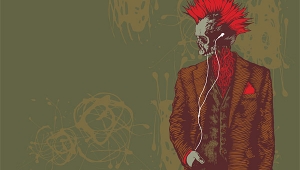| Columns Retired Columns & Blogs |
2011 Records To Die For Page 6
KALMAN RUBINSON
BARTÓK: Divertimento, Music for Strings, Percussion & Celeste
KODÁLY: Dances from Galanta
Sir Charles Mackerras, Scottish Chamber Orchestra
Linn CKD 234 (SACD/CD/Hi-Rez Download). 2004. Tim Oldham, prod.; Philip Hobbs, Calum Malcolm, engs. DDD. TT: 72:56
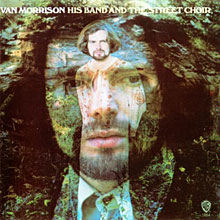 VAN MORRISON: His Band and the Street Choir
VAN MORRISON: His Band and the Street Choir
Warner Bros. 1884-2 (CD). 1970. Van Morrison, prod.; Elliot Scheiner, eng. AAD. TT: 42:19
PHILIP GLASS: Solo Piano
Sony Masterworks MK 45576 (CD). 1989. Philip Glass, Rory Johnston, prods.; Miles Green, eng. DDD. TT: 50:20
JOAN SUTHERLAND: The Art of the Prima Donna
Arias by Arne, Bellini, Delibes, Gounod, Handel, Meyerbeer, Mozart, Rossini, Thomas, Verdi
Joan Sutherland, soprano; Francesco Molinari-Pradelli, Orchestra & Chorus of the Royal Opera House, Covent Garden
Decca 289 467 115-2 (2 CDs). 1960. James Walker, prod.; Kenneth Wilkinson, eng.; Andrew Wedman, Thorsten Weigelt, remastering engs. ADD. TT: 108:32
BOB DYLAN: Infidels
Columbia CH 90317 (SACD/CD). 1983/2003. Bob Dylan, Mark Knopfler, prods.; Josh Abbey, eng. AAD. TT: 42:16
GIL EVANS & THE MONDAY NIGHT ORCHESTRA: Live at Sweet Basil Vols. 1 & 2
Evidence ECD-22026 (2 CDs). 1992. Shigeyuki Kawashima, Horst Liepolt, prods.; Allan Tucker, Richard Romaniello, engs. DDD. TT: 2:26:13
BARTÓK: Divertimento, Music for Strings, Percussion & Celeste
KODÁLY: Dances from Galanta
Sir Charles Mackerras, Scottish Chamber Orchestra
Linn CKD 234 (SACD/CD/Hi-Rez Download). 2004. Tim Oldham, prod.; Philip Hobbs, Calum Malcolm, engs. DDD. TT: 72:56
MOZART: Requiem (ed. Levin)
Sir Charles Mackerras, Scottish Chamber Orchestra & Chorus
Linn CKD 211 (SACD/CD/Hi-Rez Download). 2002. Tim Oldham, prod.; Philip Hobbs, eng. DDD. TT: 54:48
MOZART: Symphonies 38–41
Sir Charles Mackerras, Scottish Chamber Orchestra
Linn CKD 308 (2 SACD/CDs/Hi-Rez Download). 2007. James Mallinson, prod.; Philip Hobbs, eng. DDD. TT: 2:19:18
With the passing of Sir Charles Mackerras last July, I took some time to listen again to his recordings. There are many, but these three sets collect his most impressive and satisfying. On the one hand, he conducted the classics, especially Mozart, with the drama and flair of traditional performance practice, yet progressively incorporated the insights of modern scholarship. Heck, his Mozart Requiem is my favorite, and I don't expect to ever hear the late symphonies more perfectly performed than here. On the other side, Mackerras spent many years in Prague, where he immersed himself in the scores of the Czech and Hungarian masters of the 20th century, and later became principal guest conductor of the Czech Philharmonic. His series of recordings of Janácek's operas for Decca, and the Kodály-Bartók disc listed above, stand as monuments to his commitment.
 WAGNER: Der Ring des Nibelungen
WAGNER: Der Ring des Nibelungen
Juha Uusitalo, John Daszak, Anna Larsson, Stephen Milling, Peter Seiffert, Petra Maria Schnitzer, Jennifer Wilson, Catherine Wyn-Rogers, Gerhard Siegel, Lance Ryan, Ralf Lukas, Franz-Josef Kapellmann, Matti Salminen, Elisabete Matos, others; Comunitat Valencia Community Orchestra, Valencia Regional Government Choir; Zubin Mehta
C-Major 703904 (4 BDs). 2010. Friedemann Engelbrecht, prod.; Philipp Knop, surround mix, balance eng. PCM Stereo, DTS HD MA 7.1. TT: 15:52:00
Between the recordings by Furtwängler (Rome 1953), Keilberth (Bayreuth 1955), and the Solti-Culshaw stereo blockbuster (Vienna 1958–1964) and the first decade of the 21st century, there has been a long gap in great performances of Wagner's Ring. And while there are two well-performed and well-recorded Rings on SACD (Fisch/Adelaide on Melba and Haenchen/Netherlands on Et'Cetera), we've been awaiting the trifecta of a first-rate cast and conductor, cutting-edge sound, and this immortal music. We wait no longer.
The Valencia production by Carlus Padrissa is absolutely spectacular in translating the passion and flavor of the traditional through the lens of space-age engineering. The entire cast is excellent, but I must single out Juha Uusitalo's impressive Wotan, Jennifer Wilson's brilliant Brünnhilde, Anna Larsson's formidable Fricka, and the marvelous Matti Salminen as Fasolt, Hunding, and Hagen. In Die Walküre, Petra Maria Schnitzer's Sieglinde deserves special mention for her singing and her convincing human/wolf characterization. Zubin Mehta is an old hand at this, binding and whipping the orchestra into a truly through-performed presentation. This crew doesn't displace those of the classic recordings listed above, but they concede little.
It is this set's technical aspects that vault it to fore. Aided by superb camerawork, the Blu-ray video is spectacular and gripping, even when Wagner has his singers stand and review the history of the world as they see it. The multichannel sound is superbly balanced, the orchestra depicted in excellent detail and, when needed, massive power. The singers' voices are presented so clearly that some have wondered if they were wearing microphones. (They weren't.)
The individual operas are available separately, and there is a disc of highlights. But if you have any interest in opera, and/or specifically in Wagner, you should not hesitate. This is a release of historic proportions.
LELAND RUCKER
 VAN MORRISON: His Band and the Street Choir
VAN MORRISON: His Band and the Street ChoirWarner Bros. 1884-2 (CD). 1970. Van Morrison, prod.; Elliot Scheiner, eng. AAD. TT: 42:19
Along with Astral Weeks and Moondance, His Band and the Street Choir outlines the styles of music that defined, more or less, the long and winding road Morrison would take for the next 40 years: energetic, memorable hit singles ("Domino"), R&B workouts with a conspicuous acoustic guitar and a Celtic edge ("Give Me a Kiss," "I've Been Working," "Blue Money," "Sweet Jannie"), sweet soul ballads that sound like songs you heard somewhere else ("Gypsy Queen," "Call Me Up in Dreamland," "If I Ever Needed Someone"), and existential folk music ("Crazy Love," "Virgo Clowns"). And all with nary a note wasted.
WILLIS ALAN RAMSEY: Willis Alan Ramsey
Koch 8019 (CD). 1972/1999. Willis Alan Ramsey, Denny Cordell, prods.; Bob Potter, Peter Nichols, Wayne Dailey, Robin Hood, Elliot Mazer, engs. AAD. TT: 39:58
Willis Alan Ramsey was 21 when he released this debut album. He has never released another. At the time, Ramsey was young, curious, and whimsical, open to anything, and obviously fascinated with country, soul, blues, history ("Boy from Oklahoma"), storytelling ("Ballad of Spider John"), and sex ("Muskrat Candlelight," "Geraldine and the Honeybee"). The album sounds like what it feels like to be 21 years old. Rumors of a follow-up still flourish, but when asked, Ramsey often jokes, "What's wrong with the first one?" Why mess with perfection?
MARKUS SAUER
PHILIP GLASS: Solo Piano
Sony Masterworks MK 45576 (CD). 1989. Philip Glass, Rory Johnston, prods.; Miles Green, eng. DDD. TT: 50:20
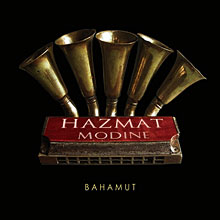 HAZMAT MODINE: Bahamut
HAZMAT MODINE: Bahamut
Wade Schuman, Randy Weinstein, vocals & harmonica; Steve Elson, saxophone; Pamela Fleming, trumpet; Joseph Daly, tuba; Pete Smith, Michael Gomez, guitar; Richard Huntley, drums; Huun-Huur-Tu throat singers
Barbès BR0014 (CD). Wade Schuman, prod., Scott Lehrer, prod., eng. Jan Rosenberg, Peter Karl, engs. DDD? TT: 67:57
My picks for R2D4 2011 cover the extremes: one CD has been in my household for ages and seen a lot of playing, the other I've come across only recently; one is the expression of a single musician, the other a band effort; one is sober, measured, and contemplative, the other raucous and exhilarating, a joyful celebration of being alive.
The first, of course, is Philip Glass's Solo Piano. If you don't "get" minimalism, no amount of praise from me will convince you. For me, this disc, along with Glass's score for the film Koyaanisqatsi, is an essential musical fix that I find myself returning to regularly long after I've stopped playing many of his operas (some of which haven't aged all that well). Soothing, calming, liberating music. The sound is a bit dry and bright but suits the music well.
Hazmat Modine (the first part of the name is a contraction of hazardous materials, the latter a brand of radiator) is the kind of group that makes you consider moving to New York City just so you can hear it regularly. Led by harmonica player extraordinaire Wayne Schurman, the band has a sound that's unique, robust, and warm (not least thanks to its bass lines being provided by a tuba). The music is based on the blues, but adds any number of elements from around the world, including Klezmer, Hawaiian guitar, a cimbalom, and the Tuvan throat singers Huun-Huur-Tu. It sounds strange on paper, but it works fantastically well, and is by far my most-played album this year.
JASON VICTOR SERINUS
JOAN SUTHERLAND: The Art of the Prima Donna
Arias by Arne, Bellini, Delibes, Gounod, Handel, Meyerbeer, Mozart, Rossini, Thomas, Verdi
Joan Sutherland, soprano; Francesco Molinari-Pradelli, Orchestra & Chorus of the Royal Opera House, Covent Garden
Decca 289 467 115-2 (2 CDs). 1960. James Walker, prod.; Kenneth Wilkinson, eng.; Andrew Wedman, Thorsten Weigelt, remastering engs. ADD. TT: 108:32
It takes a lot of words to introduce this 24-bit/96kHz transfer of one of the finest opera recitals ever committed to LP. Recorded in August 1960, when Decca's engineers excelled at capturing the natural sound of a glorious voice, chorus, and orchestra resounding in a large acoustic, this album finds the late coloratura soprano Joan Sutherland in breathtaking form. Heard on a system as fine as the dCS-VTL-Wilson-Transparent rig displayed at the 2010 Rocky Mountain Audio Fest, La Stupenda's ravishing high range glows like no other. The ease of Sutherland's runs, the sureness of her technical accomplishments, and the brilliance of her sound are as stupendous as the recording itself. Each time I listen to Sutherland's Golden Age vocalism, I can't help but exclaim in amazement.
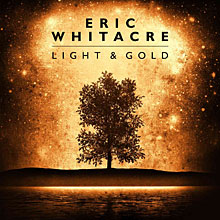 ERIC WHITACRE: Light & Gold: Choral Music
ERIC WHITACRE: Light & Gold: Choral Music
Eric Whitacre, Eric Whitacre Singers. With: Grace Davidson, soprano; Stephen Kennedy, baritone; Laudibus; The King's Singers; Pavâo Quartet; Hila Plitmann, narrator; Christopher Glynn, piano.
Decca B0014850-02 (CD). 2010. Raphaël Mouterde, prod.; Andrew Mellor, eng. DDD. TT: 71:16
This, the only CD to feature Eric Whitacre conducting his own, handpicked choir in his own music, is a revelation. Umpteen versions of the title work, Lux Aurumque (Light & Gold), may be available, not least of which are renditions by Polyphony (justly praised by John Marks), Cantus (the all-male choir spectacularly recorded by John Atkinson), and the YouTube/Whitacre Virtual Choir (a multi-million-hit worldwide sensation), but none offers the host of accents, volume gradations, and shadings that Whitacre and his singers lavish on this transcendentally beautiful work. The textures in every track are so personal, the quiet passages so intimate, and the silences so profound, that it's as if we've been invited into Whitacre's inner sanctum. To hear his Five Hebrew Love Songs narrated by the poet herself (Whitacre's wife, Hila Plitmann), or The Stolen Child performed by its dedicatees (The King's Singers), is icing on the cake.
DAVID SOKOL
BOB DYLAN: Infidels
Columbia CH 90317 (SACD/CD). 1983/2003. Bob Dylan, Mark Knopfler, prods.; Josh Abbey, eng. AAD. TT: 42:16
A lot of people, even some seriously plugged into the music of the last quarter of the 20th century, lost sight of Bob Dylan between Desire (1976) and Time Out of Mind (1997). Perhaps it was his trilogy of Christian-leaning records, or maybe it was the perceived inconsistency of the rest, most of which hardly revealed that they were the work of the best songwriter of our time. In any case, the great white wonder did make some fine music during those lost decades, and none better than Infidels, which directly followed the aforementioned trilogy. This remarkably sturdy collection showcases many sides of the artist: the political observer ("Union Sundown"), the worldly commentator ("Neighborhood Bully"), the voice of wisdom ("Man of Peace"), even the romantic ("Don't Fall Apart on Me Tonight"). Dylan's songs are catchy and melodic, his voice evocative and tender, and his band stellar—led by the pulsing rhythm section of Sly Dunbar and Robbie Shakespeare, former Rolling Stones guitarist Mick Taylor, and coproducer and Dire Straits frontman Mark Knopfler. If you haven't spun this one in a while, there's a very good chance you'll be caught off guard by just how good it sounds, sonically and musically.
 EMMYLOU HARRIS: Wrecking Ball
EMMYLOU HARRIS: Wrecking Ball
Elektra/Asylum 61854-2 (CD). 1995. Daniel Lanois, prod.; Trina Shoemaker, Sandy Jenkins, Mark Howard, engs. AAD? TT: 53:05
It's been more than 35 years since, as Gram Parsons' protégée, Emmylou Harris first wowed anyone with a pulse for smart country music. Her mellifluous soprano was a knockout, and as she evolved into a headliner, it got only more breathtaking. And her musical taste, full of respect for the traditional, naturally veered toward what came to be known as alternative country. Now, 15 years after its release, Wrecking Ball still stands as the crowning achievement in a career full of them. Harris reinvents songs by such country-leaning heroes as Steve Earle, Lucinda Williams, Gillian Welch, former Hot Band member Rodney Crowell, and Neil Young (who wrote the title song). Her shimmering vocals and delicate phrasings play absolutely perfectly against Daniel Lanois's stark, dark, rhythm-rich production. The bass virtually jumps out of the speakers. With Wrecking Ball, heavy with minor-key excursions, artist and producer turned country music upside down . . . and pointed to just how big and opulent the genre can be. (XVIII-12, XXI-2)
JOHN SWENSON
GIL EVANS & THE MONDAY NIGHT ORCHESTRA: Live at Sweet Basil Vols. 1 & 2
Evidence ECD-22026 (2 CDs). 1992. Shigeyuki Kawashima, Horst Liepolt, prods.; Allan Tucker, Richard Romaniello, engs. DDD. TT: 2:26:13
For all of Gil Evans' immense contributions to music history, for my money his 1983–88 stand at New York's Sweet Basil was his greatest achievement. This was the summation of his life's work—he led the band until two months before his death. The 14-piece orchestra had its stars—trumpeters Lew Soloff, Hannibal Marvin Peterson, and Miles Evans; George Adams and Chris Hunter on saxophones; Howard Johnson on tuba, baritone sax, and bass clarinet; Pete Levin on synths; and Adam Nussbaum on drums—but it was the combined sound of the band, guided by Evans' brilliant arrangements, that mattered. The symphonic reinvention of Wayne Shorter's "Parabola" that opens Vol.1 provides a perfect illustration of Evans' mastery of sonic imagery. The recordings, from August 1984, find the band in peak form, casting Evans' arrangement spell over a universe in which Thelonious Monk, Charlie Parker, Charles Mingus, and Jimi Hendrix occupied equal space. This is no longer a startling vision, but it was back then. Hendrix and Evans were collaborating before the guitarist's death, and these versions of "Voodoo Chile" and "Up from the Skies" (Vol.1), and the "Stone Free" suite (Vol.2), indicate where that partnership might have gone. Nearly two decades later, the New Orleans rock/brass band Bonerama would apply Evans' ideas to brass arrangements.
 GRANT GREEN: Grantstand
GRANT GREEN: Grantstand
Grant Green, guitar; Yusef Lateef, flute, tenor saxophone; Jack McDuff, organ; Al Harewood, drums
Blue Note 46430 (CD). 1961/1987. Alfred Lion, Michael Cuscuna, prods.; Rudy Van Gelder, Ron McMaster, engs. ADD. TT: 42:21
Guitarist Grant Green's 1961 classic, his third album for Blue Note, epitomized the free-swinging creative spirit of early 1960s jazz. Though Green was not an avant-garde player, he'd absorbed the spirit of Charlie Parker's harmonic innovations into his own R&B-based sound, making him part of what would become known as the soul jazz movement. Green's guitar and Yusef Lateef's tenor and flute engage in a relaxed, conversational dialogue, nudged along by Jack McDuff's expressive organ work and the behind-the-beat propulsion of drummer Al Harewood. The title track is a terrific theme that provides plenty of solo space for Green, Lateef, and McDuff. The extremely soulful "Blues in Maude's Flat" would become a widely influential tune, recorded by, among others, the Atlanta Rhythm Section. Green's outstanding touch works well in the standards "My Funny Valentine" and "Old Folks." The funky "Green's Greenery" was not included on the original vinyl release.
- Log in or register to post comments

